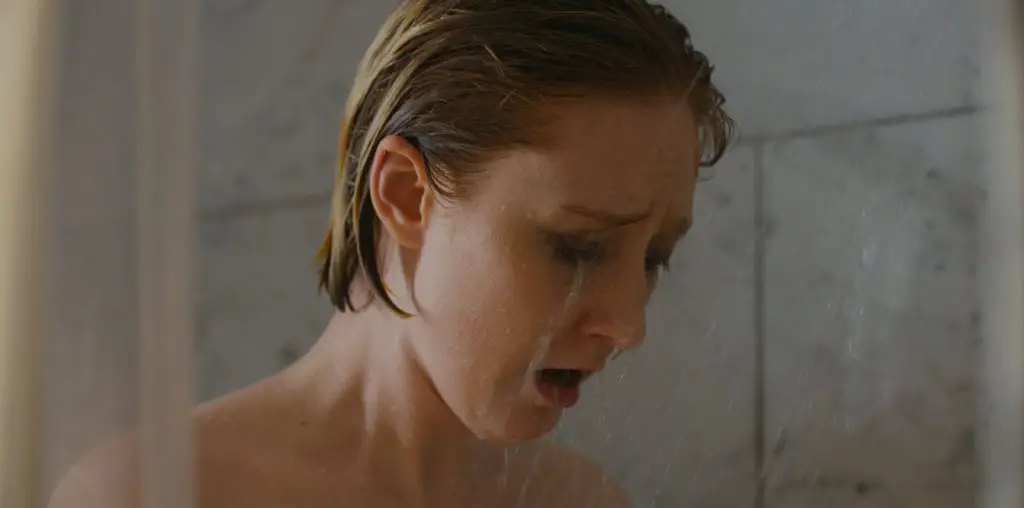
BOOTLEG FILES 193: “Native Son” (ill-fated 1951 adaptation of the Richard Wright novel).
LAST SEEN: Available for viewing on several Net sites.
AMERICAN HOME VIDEO: Only on public domain dupes.
REASON FOR DISAPPEARANCE: Orphaned movie
CHANCES OF SEEING A DVD RELEASE: There has been no interest in coordinating a much-needed restoration of this much-maligned film.
In the years following World War II, Hollywood finally acknowledged a problem that was evident to African Americans for the previous three centuries: the United States had serious problems with racism. A few movies such as “Home of the Brave,” “Pinky,” “Lost Boundaries” and “No Way Out” cautiously tiptoed through the subject – and while they seemed daring for their time, today they seem too timid in addressing the subject.
In this period, a serious attempt was made to use the film medium to attack American racism. The source material of this endeavor was Richard Wright’s 1940 novel “Native Son,” which was (and still remains) one of the most volatile condemnations of state-sanctioned racism. Unfortunately, the transition from page to screen turned the brilliant anger of Wright’s text into one of the most bizarre films ever made.
“Native Son” created a sensation when it was first published, and no less a figure than Orson Welles saw its potential for dramatic adaptation. In 1941, Welles directed and produced a Broadway production of “Native Son” starring Canada Lee as the doomed Bigger Thomas. The play was a huge commercial hit in New York and in a subsequent national touring company.
However, Hollywood balked at a direct cinematic adaptation of the play (let alone the book, which was even more direct and angry than the Welles stage version). In a period when African Americans were limited to either demeaning comedy relief roles as domestic servants or occasional flashy numbers in musical revues, the idea of a head-on attack at racism was impossible to conceive. Throughout the 1940s, Wright received film offers for “Native Son” that centered on a major plot switch: change Bigger Thomas from a black man into an ethnic white. Wright angrily refused to consider this.
In 1947, Wright left America and relocated in Paris. In his new setting, he hooked up with filmmaker Pierre Chenal to produce a film version of “Native Son.” From the beginning, the film faced insurmountable problems.
Wright had been a long-standing member of the Communist Party, but quit before leaving America. Still, his Red heritage put him on the American government’s radar during the Cold War. Simultaneously, any serious attempt to enact civil rights legislation in the 1940s was inevitably screamed down as being Communist propaganda. Not surprisingly, the Soviet Union played up American racial inequalities as part of the anti-Western propaganda war. Thus, Wright and “Native Son” were viewed by the American government as Commie threats.
As a result, the American government pressured its French counterpart not to provide funds to any local studio that would produce “Native Son.” Since the French government’s funding of local films was crucial at the time, French filmmakers rejected the Chenal-Wright project.
Wright also tried to get Canada Lee to recreate the role of Bigger Thomas on screen. But Lee was fighting his own blacklisting drama at the time and any involvement with Wright and “Native Son” would have been career suicide.
Chenal came up with a pair of unusual solutions to these problems. Rather than shoot the film in France, “Native Son” would be made in Buenos Aires. Why Buenos Aires? It seemed that Chenal lived in Argentina during World War II and had connections in that film industry. As for casting Bigger Thomas, Chenal decided Wright should play the role. The fact Wright never acted before and was at least 20 years older than the character he envisioned somehow never got in the way of logic’s progress.
Since there were considerable geographical differences between Buenos Aires and Chicago (the book’s central setting), Chenal and Wright traveled to the Windy City in late 1949 to shoot exterior scenes. This was the first time in three decades that a professional film was shot on Chicago’s streets. However, Chenal and Wright were unable to attract any American actors to “Native Son” due to the Red taint that the production carried. As a result, they hired nonprofessionals and brought their cast to Buenos Aires for the bulk of the production.
To make a long story short, the Argentine production was a disaster. The local producers had considerable ethical problems. The film ran low on funds and high on tempers, and Wright’s loathing of the fascist government of Juan Peron only exasperated matters. Chenal tried to fill smaller roles with Argentine actors, but their English skills were so poor that he wound up recruiting American tourists and students in Buenos Aires to dub the messed-up lines.
To its credit, the finished film dares to inveigh against the poverty and injustice leveled against African Americans. It frankly addresses the miserable conditions of the Chicago slums and the severe limits of occupational opportunities for African Americans (the film highlight is Wright’s monologue on how his dream to become a pilot was wrecked by racism in airline hiring). And for the record, this is the first film where a black character kills a white character.
Unfortunately, Wright and his fellow amateurs were terrible actors. The aforementioned monologue notwithstanding, Wright had no clue how to channel the fury of his writing into acting. The resulting performance was an embarrassment, particularly when one realizes he is a middle-aged man pretending to be a maladjusted youth. As for the rest of the cast, “Native Son” seems like a filmed community theater project rather than a professional film. Likewise, the cheapjack production is no help, and the disconnect regarding location (the Chicago exteriors were barely used) made it seem like a film without roots.
Though in a way, it might be unfair to judge the film since the extant prints are not what Chenal and Wright planned. When “Native Son” was ready for its American theatrical run in 1951, the New York State Board of Censors refused to allow its exhibition unless substantial cuts were made. Most of the cuts were designed to dilute the harshness of the film’s condemnation of poverty and racism (particularly a scene where Bigger kills a rat in his slum apartment), but cuts were also demanded in the virulently left-wing monologue given by Bigger’s attorney during the climactic murder trial. That monologue suggested American society was responsible for Bigger’s action, which the censors would not allow on screen. The censors, however, allowed a completely irrelevant musical interlude to remain intact.
Sadly, the cuts were made and “Native Son” lost 30 minutes of footage, which resulted in a disjointed and enervated movie. These changes didn’t help the commercial prospects (reviews were poor and the box office was puny), and the film’s tiny distributor was unable to secure wide release due to the political difficulties associated with the production. The entire affair left Wright disgusted and he refused to allow the film to be seen in France.
“Native Son” fell into the public domain and crummy dupes of the censored version have circulated for some time. However, the excised footage was not lost and a restoration would not be impossible. But for an orphan film with a poor reputation, it is unlikely that anyone will devote the time and money to restoring “Native Son” to its original state.
IMPORTANT NOTICE: The unauthorized duplication and distribution of copyright-protected material is not widely appreciated by the entertainment industry, and on occasion law enforcement personnel help boost their arrest quotas by collaring cheery cinephiles engaged in such activities. So if you are going to copy and sell bootleg videos, a word to the wise: don’t get caught. The purchase and ownership of bootleg videos, however, is perfectly legal and we think that’s just peachy! This column was brought to you by Phil Hall, a contributing editor at
Film Threat and the man who knows where to get the good stuff…on video, that is.
Discuss The Bootleg Files in Back Talk>>>

